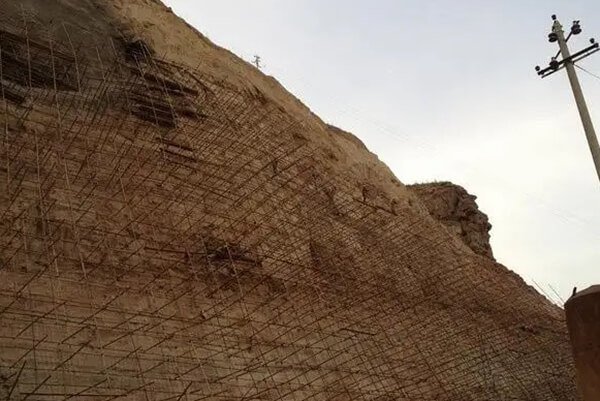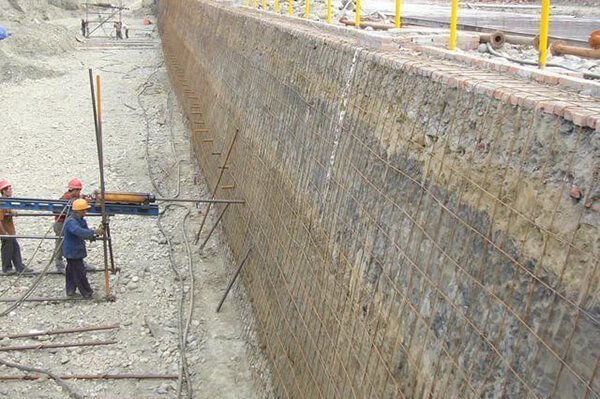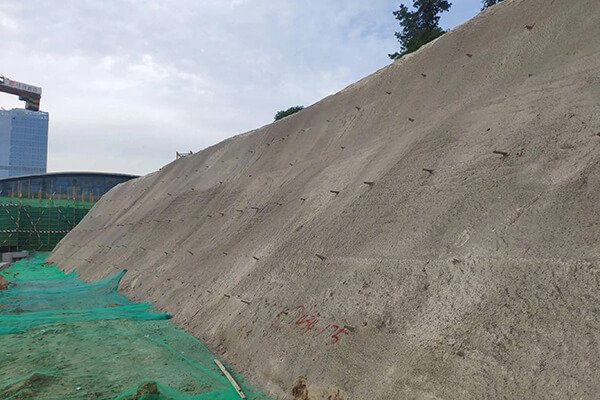Soil nailing technology is to insert steel bars into the soil horizontally or approximately horizontally and spray concrete on the slope surface to form soil reinforcement zones, similar to gravity retaining walls. This zone can support the stability of the unreinforced soil behind it like a homogeneous anti-sliding body, which mainly uses the tensile effect of the reinforced rods placed in the soil to strengthen the shear resistance of the soil.

As a construction technology, soil nailing has four advantages.
Economic Benefits
In Europe, when excavating a soil pit with a depth of about 10m, the use of soil nails can save 10% to 30% of the cost compared with the use of an underground diaphragm wall or Berlin Wall with anchor rods. In specific engineering cases, the support method of soil nails + anchor rods can save 40% of the cost compared with the use of excavated piles + anchor rods for supporting slopes in soft soil foundation pits.
Construction Equipment
Soil reinforcement construction drilling tools and concrete spray guns are small in size, light, and low in noise. This is a big plus in urban environments where noise, vibration, and approach can be a problem. Similarly, when it is impossible to transport large equipment for piling in other places, the simple equipment required is also a great advantage.

Construction Flexibility
Soil nailing is fast in construction and easy to form during construction and excavation. It is a flexible technology, and it is easier to adapt to different soil layer conditions and construction procedures during the excavation process.
Effect
Field observations have shown that the total displacement required for the reinforcement to function is small, which is generally equivalent to the displacement of a good support system in the Peck classification. In addition, soil nails can be constructed immediately after excavation, following the excavation surface, which can reduce soil disturbance and reduce the possibility of causing damage to adjacent buildings.

The soil nailing wall also has certain limitations in its application, mainly including:
When soil nailing is constructed, it is generally necessary to excavate a depth of 1 to 2 m. Before spraying concrete and installing soil nails, it needs to be stabilized without support for at least several hours. Therefore, the soil layer must have a certain natural “cohesion” or cementing force. Otherwise, first treatment such as grouting or shotcrete is required to maintain the stability of the slope, but this will make the construction complicated and increase the cost;
During soil nailing construction, it is required that there is no water seepage on the slope. If groundwater seeps out from the slope, the excavated slope will collapse locally, making it impossible to excavate a shotcrete surface;
Soil nails should not be used for excavation support in soft soil. Soft soil has low friction, and in order to obtain certain stability, it is necessary to require long soil reinforcement and high density. At this time, it is more appropriate to use anti-sliding piles or anchor underground diaphragm walls.
Soil nailing has been used more and more in the protection of cutting slopes and the excavation of deep foundation pits for high-rise buildings, and even many are used for emergency reinforcement, collapse, slip treatment, and disease control when conventional supports are unstable. However, due to the limitations of soil nailing support, as mentioned above, this support cannot be used alone in the case of loose sand, soft soil, fluid plastic clay, and abundant groundwater sources, and must be used with other soils. Reinforcement and support methods are used in combination. In fact, with the development of soil nailing technology, there is currently a soil nail that can overcome this situation and can be constructed under broken and loose geological conditions, that is, self-drilling soil nails.



